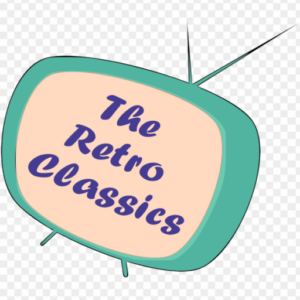For decades, cable television was the go-to source for entertainment and news for millions of households. With its wide range of channels and programming options, it dominated the television landscape. However, in recent years, there has been a dramatic shift as more and more people are leaving cable television in favor of streaming services.
I personally love cable, but I am nearing the end of the road as the quality sucks and prices continue to rise. Obviously streaming has driven many people to get rid of their cable TV service, but I’ve been wondering if there are more reasons why people hate cable TV today. Here are some of the reasons that people say cable TV sucks.
High Costs and Hidden Fees
One of the biggest complaints about cable television is the cost. Cable TV packages can be exorbitantly expensive, with prices constantly on the rise. Moreover, cable companies are notorious for charging hidden fees, such as equipment rental fees, broadcast fees, and regional sports fees, which can add up quickly and inflate monthly bills. Many consumers feel that they are paying for channels and services they don’t even want or need, making cable TV an inefficient and costly option.
I generally don’t have a problem with the price of cable. However, the yearly hassle of having to “bundle,” as my cable provider calls it, is maddening. I am already forced to pay for a ton of garbage I don’t want, including telephone service. I would be perfectly happy paying the exorbitant price if it was as transparent as a streaming service and I had a fair warning before a price increase.
Limited Flexibility and Customization
Cable television often comes with rigid packages and bundles, which means that consumers have to pay for a bundle of channels, even if they only watch a few of them. This lack of flexibility and customization can be frustrating, as consumers are forced to pay for content they don’t want, while being limited in their choices. In contrast, streaming services offer a la carte options, allowing users to choose the specific channels or content they want to watch, providing more flexibility and customization to suit individual preferences.
The economics of cable TV are pretty complicated and certainly beyond the scope of this article. However, there must be a better way to get content. I have nearly every major streaming service, so I really don’t need cable except for sports. But therein lies the problem: There is no alternative to getting sports channels outside of a major package with hundreds of channels of worthless garbage. Of course, the same is also true for people who hate sports and would love a package that didn’t include the costliest channels in a cable package.
Annoying Ads
Cable TV is notorious for its incessant and lengthy advertisements. Viewers are bombarded with commercials during their favorite shows, disrupting the viewing experience and wasting time. Ads are a necessary evil for cable companies, but streaming shows that we can rid ourselves of annoying ads and be much happier. If I start watching a movie on cable, I often look for it on a streaming service so I can watch ad-free and get through it much faster. Even ad-supported services and tiers show significantly shorter ads, and they appear less frequently.
Outdated Technology
Cable TV relies on outdated technology, such as cable boxes and physical cables, which can be clunky and inconvenient. Cable boxes are often required for each TV in the household, leading to a mess of wires and clutter. Moreover, cable companies are notorious for providing poor customer service and outdated user interfaces, making the overall viewing experience less user-friendly. In contrast, streaming services are often accessed through apps on smart TVs, smartphones, tablets, and other devices, offering a more modern and streamlined viewing experience.
Until now, cable in my area was unecrypted, which means I didn’t need a separate cable box for each TV. However, the change to an encrypted network is the driving force of me getting rid of cable. I have a TV in every room, as well as one on my patio and in my shop. It doesn’t make sense to spend $15 per month to get a box for a TV that rarely gets any use. Instead, I can switch to a live TV streaming service and use my existing Roku devices to watch on as many TVs as I want.
Speaking of Outdated technology, the picture quality is downright terrible. A few years ago, I replaced two of my aging HD TVs with a new 4K OLED and QLED. These TVs both had HD boxes attached, but the picture quality was so bad that I almost brought the TVs back. Streaming looks incredible, but I still do not watch cable on that OLED TV. Most annoying of all, my cable company has an option to stream in high-definition, but you have to pay for an additional device to get access to their streaming service.
Flexibility
Another advantage of streaming services is the flexibility in canceling or changing subscriptions. Most streaming services offer monthly subscriptions that can be easily canceled or changed without any long-term commitments. This gives viewers the freedom to try different services, switch between them, or even cancel them altogether without incurring hefty cancellation fees. In contrast, cable TV often requires long-term contracts with early termination fees, making it difficult for viewers to change or cancel subscriptions without financial penalties.
Cancellation isn’t a major problem for me since I don’t plan on switching. In contrast, I would much rather sign a contract and be locked into a price for a couple of years. Of course, we know cable companies would royally mess that up by locking the contract price into shorter period than the actual contract.
The one thing I really like about streaming is how convenient it is to cancel a service and start it back up again. Unlike cable, I can sign up for a service when a new show comes out and cancel as soon as I’m done watching. That means I may pay for Disney Plus this month, then cancel it next month to sign up for Netflix or Max based on what’s coming out.
The Reality of Live TV Streaming
While cable has its flaws, live TV streaming does as well. I have largely avoided anything other than cable since my internet is bundled with it, and canceling TV service will only make my internet go up astronomically. Therefore, cutting the cord doesn’t always represent a major savings.
Another major problem is internet reliability. Today, most people’s home internet is very reliable, but if the strength intermittently dips, you can end up missing the best parts of a show or game. One of my biggest concerns is that my internet speed isn’t fast enough to keep up with so many streams. After all, having to go up to the fastest internet speed in order to keep up with live TV streaming would negate any savings from getting rid of cable in the first place.








